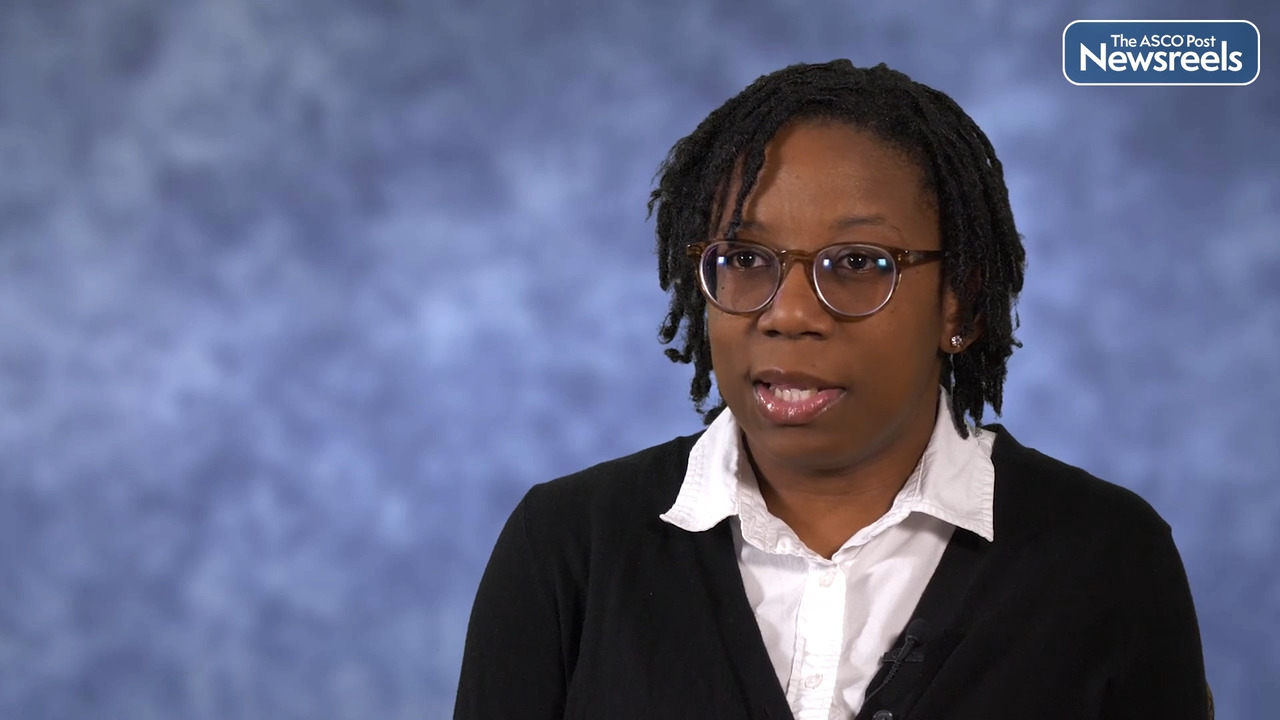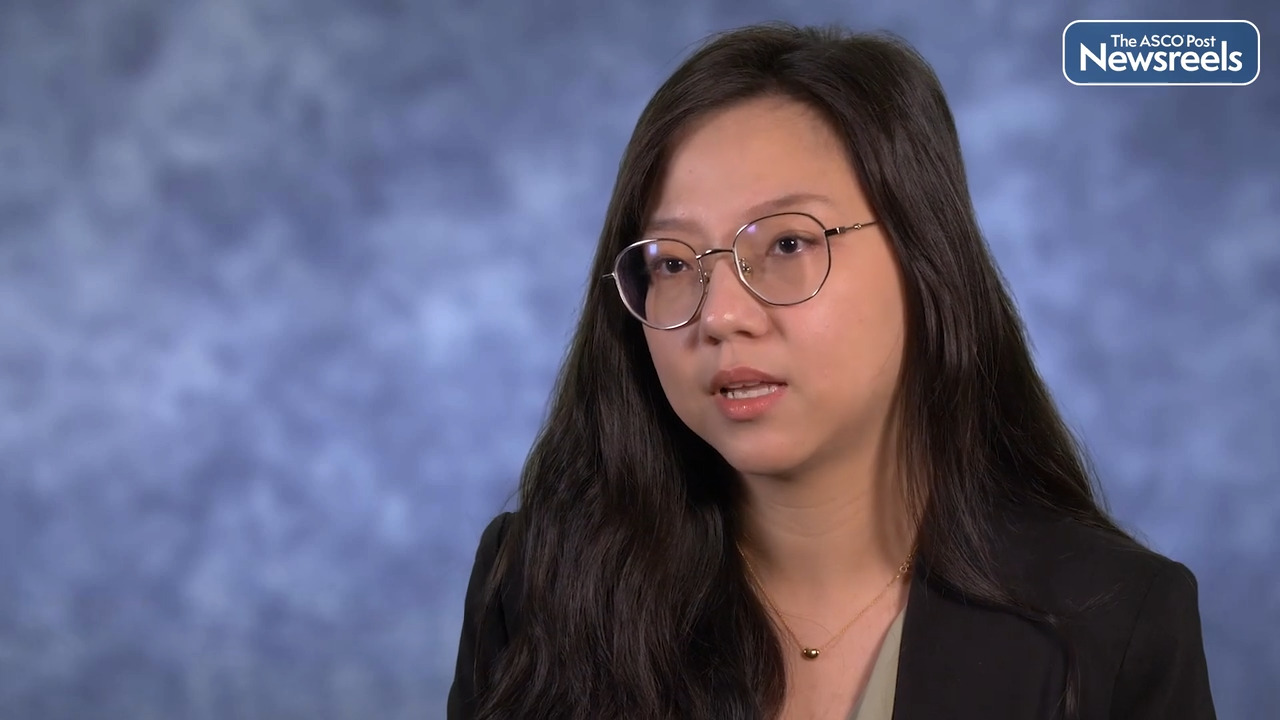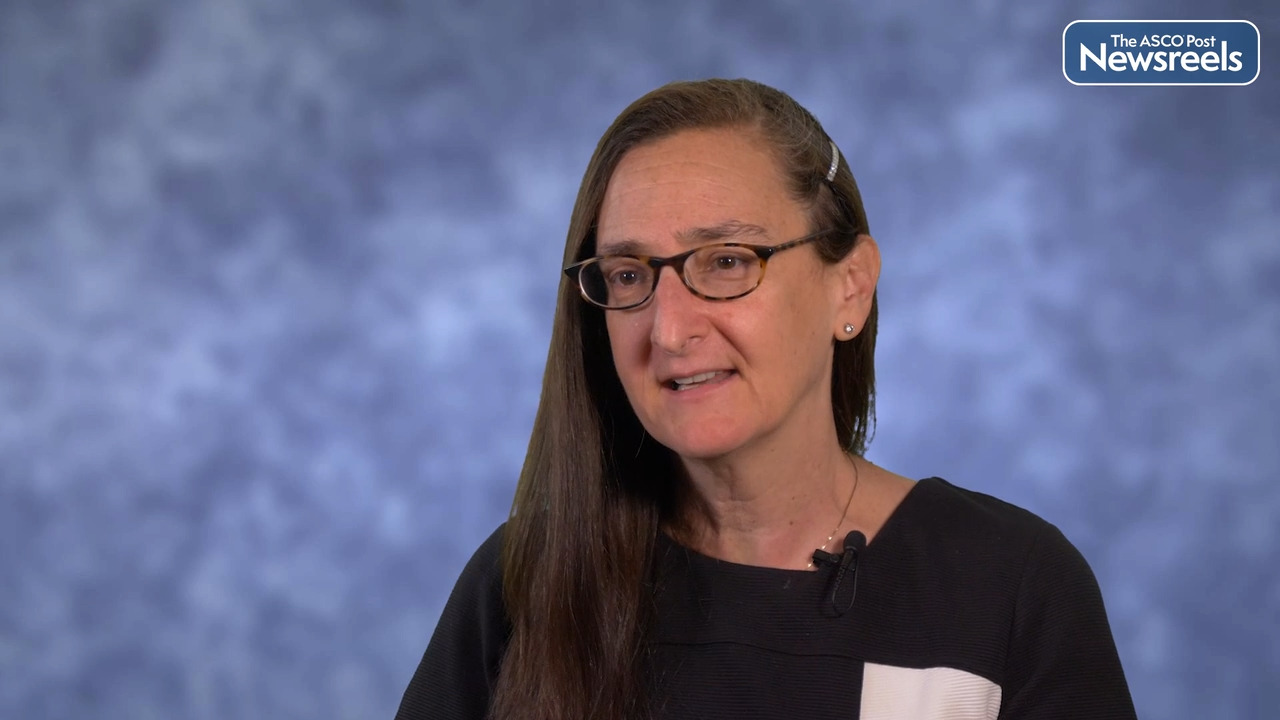Transcript
Disclaimer: This video transcript has not been proofread or edited and may contain errors.
We were interested in investigating the time burden of care faced by older adults with acute myeloid leukemia. We had seen some recent literature exploring this topic in other cancer states, specifically in breast and pancreatic cancer, where there's a substantial burden of time for folks with advanced cancer who start treatment, time burden engaged in care. We were under the impression that this would be a very high burden among the population with AML given that it's a pretty aggressive malignancy, particularly in older adults who tend to have unfortunately short survival. We had also done prior work demonstrating that this was a topic of interest to patients. In a national survey, patients with AML had reported that time at home was an important outcome to them and something they'd be willing to even sacrifice efficacy of treatment or extended survival in order to get more time at home. But despite patient interest in this topic, prior descriptions of how long they actually spend engaged in care versus time at home were inadequate.
To address this knowledge gap, we conducted a retrospective cohort study based on records from patients at our institution, the University of North Carolina, for adults over the age of 60 diagnosed with AML between 2015 and 2020. We identified via this method 197 individuals who were older than 60 diagnosed with AML and started some kind of treatment. We grouped folks by treatment intensity, where folks receiving hypomethylating agents alone were deemed to receive low-intensity treatment. Folks receiving a hypomethylating agent plus venetoclax were deemed intermediate-intensity, and folks receiving anthracycline-based induction chemotherapy were deemed high-intensity. And then we quantified the amount of time they spent engaged in care, either in the clinic, in an infusion suite, in an emergency department, or admitted to the hospital.
What we found across that cohort is that time engaged in care was quite high. 40% of days on average were spent engaged in care between either a diagnosis and end of follow up or the individuals passing away, which compares honestly unfavorably to even other advanced cancers. We also found that despite living longer, individuals receiving high-intensity chemotherapy had only marginal gains in time at home, with the caveat that it's probably a healthier group in this uncontrolled retrospective study. Individuals who received high-intensity therapy lived on average about 20 months compared to closer to nine months on average in the lower-intensity treatment groups. However, their time at home was only about six months compared to about five months for the other groups. So despite substantial gains in survival, gains in home time were much more marginal for the high-intensity group.
I think this information is important to have available to provide to patients to inform decision-making about what treatments they would like. In moving forward for this patient population, I think we need new care models that enhance time at home, such as chemotherapy administration in the home, and I think we need to build this into prospective clinical trials as far as a secondary outcome, so that we know, in addition to survival, either overall or progression-free survival, what are we really getting patients with novel therapies.





